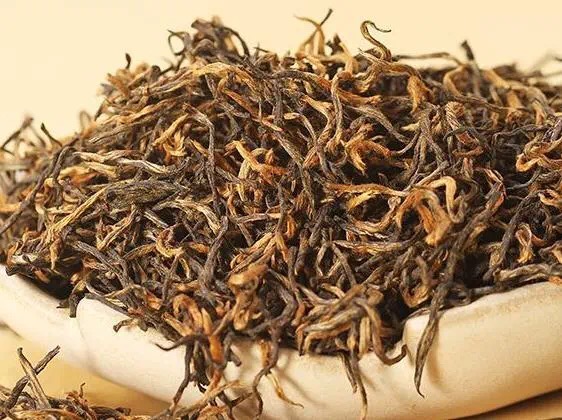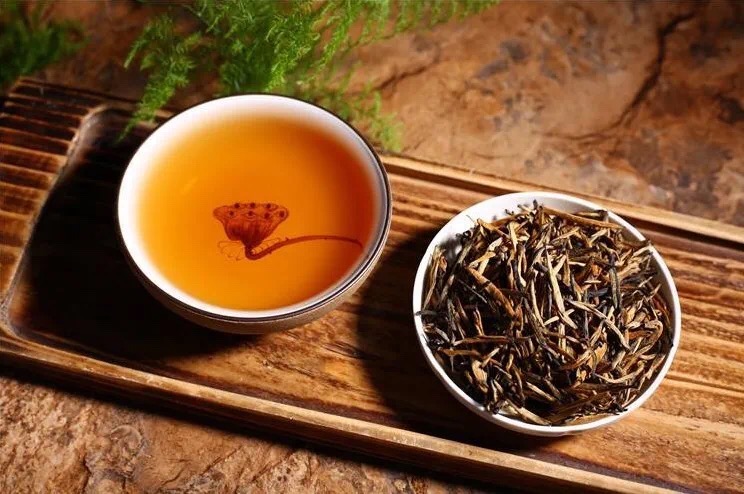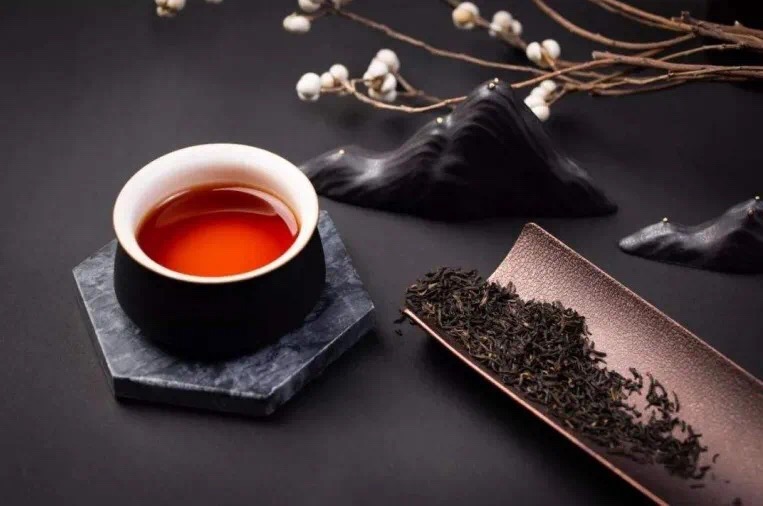- Home
- News
- The birth of black tea, from fresh leaves to black tea, through withering, twisting, fermentation and drying.
The birth of black tea, from fresh leaves to black tea, through withering, twisting, fermentation and drying.
Black tea is a fully fermented tea, and its processing has undergone a complex chemical reaction process, which is based on the inherent chemical composition of fresh leaves and its changing laws, artificially changing the reaction conditions to form the unique color, aroma, taste and shape of black tea. Black tea generally has the quality characteristics of “red soup and red leaves”.
Chinese black tea includes Souchong black tea, Gongfu black tea and broken black tea. Soochong black tea is the oldest black tea. It is originally produced in Wuyi Mountain and is the originator of other black teas. There are many types of Gongfu black tea, and the origin is also different. For example, the main production of Qimen Gongfu black tea in Qimen County, Anhui, and Yunnan red tea Gongfu, etc.; Broken black tea is widely distributed, mainly for export.
In the process of processing, the oxidative polymerization reaction produces colored substances such as theaflavins, thearubicins, and thefuscins. These substances, together with caffeine, free amino acids, soluble sugars and other internal components, affect the color and taste of black tea; at the same time, glycosides Enzymatic hydrolysis releases terpene compounds, and the oxidative degradation of unsaturated fatty acids affects the aroma type of black tea.
The method of making black tea is inseparable, and the processing technology mainly includes four processes of withering, rolling, fermentation and drying. What responsibilities do these processes perform in the production of black tea?
1. withering.
Withering is the first process in the initial production of black tea, and it is also the basic process to form the quality of black tea. Withering has two effects:
One is to evaporate part of the water, reduce the tension of the tea cells, make the leaf stems from brittle to soft, increase the toughness of the buds and leaves, and make it easy to twist into strips.
The second is conducive to changes in the content of substances. Due to the loss of water, the permeability of the cell membrane is enhanced, and the contained biological enzymes are gradually activated, causing a series of chemical changes in the content of the tea tips, laying the foundation for the formation of the specific quality of black tea color and fragrance.
2. Kneading (Rolling )
Kneading (cutting) is an important process for Gongfu black tea and broken black tea to shape a beautiful shape and form an internal quality. Gongfu black tea requires tight appearance and strong inner taste, which depends on the degree of tightness of leaves and destruction of cell tissue.
There are three functions of rolling:
One is to destroy the leaf cell tissues by rolling, so that the tea juice overflows, accelerate the enzymatic oxidation of polyphenol compounds, and lay the foundation for the formation of the unique endoplasm of black tea.
The second is to roll the blades into a tight straight rope, reduce the body shape, and create a beautiful appearance.
The third is that the tea juice overflows and accumulates on the surface of the leaf strips, which is easily soluble in water during brewing, increasing the concentration of the tea soup and forming a shiny and oily appearance.
3. Fermentation
Fermentation is a key process for the formation of black tea color, aroma, and taste quality characteristics. Only good fermentation can form more theaflavins and thearubigen, as well as more flavor and aroma substances.
Fermentation is a continuous process, not just a process. Fermentation has always existed since the black tea was rolled and dried. Usually, a special fermentation process is set up before drying after rolling, so that the tea can reach the most suitable level.
When black tea is fermented, the kneaded tea leaves are generally placed in a fermentation frame or a fermentation cart, and then put into a fermentation tank or fermentation room for fermentation. In recent years, some new fermentation equipment have been born. Fermentation must meet the proper temperature, humidity and oxygen amount required for the oxidative polymerization of tea polyphenolase.
4. Dry.
Drying is done by drying, generally divided into two times, the first time is called the hair fire, the second time is called the foot fire. The hair and foot fire need to be spread cool.
Drying also serves three purposes:
One is to use high temperature to rapidly inactivate enzyme activity, stop enzymatic oxidation, and fix the quality of fermentation.
The second is to evaporate water, shrink the tea sticks, fix the shape, and keep the feet dry, which is conducive to maintaining quality.
The third is to emit most of the grassy smell with low boiling point, intensify and retain the aromatic substances with high boiling point, and obtain the unique sweet fragrance of black tea.



